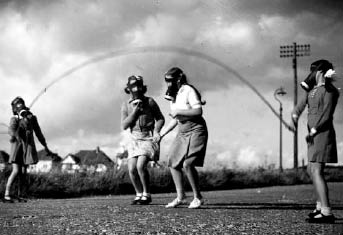Next story: "Our Health Is Not Improving"
Background on the Playground
by Geoff Kelly & Louis Ricciuti

On April 11, ground was broken for the long-delayed Niagara Charter School at 2077 Lockport Road, directly across the street from the Niagara Falls air base. It is Niagara County’s first charter school.
Charter schools are controversial, and this one has drawn its share of critics, most of whom voice concerns familiar to those who have followed the debate over charter schools nationwide and throughout the region: Charter schools draw funds from local school districts in proportion to the number of students they lure away from public schools, putting already cash-strapped school districts in even more dire straits. This forces public schools to cut programming, which drives more students toward charter schools—a vicious circle. Moreover, critics say that there is no conclusive evidence that charter schools in New York State are providing a better education than the public schools to which they are an alternative.
That debate, with its underlying issues regarding the benefits of private versus public education, will not resolve itself any time soon. The Niagara Charter School offers another cause for controversy: its location.
Between 1978 and 1979, the US Department of Energy commissioned EG&G Energy Measurements Group to conduct an aerial survey to document radiological contamination levels throughout Niagara County. The resulting survey maps—which were available on the US Army Corps of Engineers Buffalo District website until just a couple months ago, and have since disappeared—show a hotspot whose epicenter is located close by the site of the new school. On the survey map, concentric contour lines emanate from the adjacent property, representing elevated radiation exposure rates. The lines encompass the location of the school itself. According to the survey, the radiation exposure risk is up to five times typical background levels.
In health physics and epidemiology circles, the definition of “typical background levels” is a debate as controversial and unending as are the matter of charter schools to educators. Typical of what? A pristine grassland in Patagonia? Or typical of Niagara County, which for the past 75 years has hosted—and continues to host—some of the worst polluters in the country’s history? Do we define typical as “clean and safe”? In that case, should we not look back to the era before Niagara County became a dumping ground for its native chemical and metallurgical industries to define a baseline standard?
Too often the answers to these questions serve purposes other than public health and safety. Indeed, in the early years of the Manhattan Project and the Atomic Energy Commission, acceptable levels of risk to factory workers in facilities that handled toxic materials were routinely raised when production schedules demanded higher outputs.
The matter of how one defines typical background level, and how it relates to health risks, was recently a matter of great concern to local residents as a result of a gamma radiation survey conducted on the grounds of the nearby Lewiston-Porter Schools in February 2002 for the US Corps of Engineers. Many residents feel that a disproportionate number of teachers and children at the Lew-Port Schools have fallen ill, and even died, over the past few decades. The Lew-Port Schools are adjacent to the Niagara Falls Storage Site, a containment facility that hosts the world’s largest depository of radium-226—of African origin, as it happens, which is the variety that poses the greatest potential health risk to those who are exposed to it. The NFSS is another legacy of Niagara Falls industry’s long history as a production, processing and waste storage center for toxic chemical and radioactive materials.
The question many residents had goes to the slippery nature of defining what background levels are or should be, and what they mean: If the Army Corps of Engineers say that the levels of the pollutants for which they tested the Lew-Port Schools do not exceed “background,” does that mean there is no health risk? In a region that has seen so much and such cavalier disposal of toxic wastes, “typical” keeps getting higher and higher, even as scientists ever more vocally say there is no such thing as a “safe” level of exposure.
The construction site for the Niagara Charter School also is downwind of the BFI-Allied (formerly CECOS) landfill, the American Refuel incinerator and Stratcor, Inc. All are current polluters. Across the street from the school is Williams Advanced Materials, a division of Brush Wellman, a company associated with the processing of beryllium and a former contractor to the Manhattan Project and the Atomic Energy Commission.
In the worst case, the Niagara Charter School’s location will further muddy how we measure health risks and typical background levels for pollutants. If whatever the federal government’s aerial survey detected in 1979 is still there, then the bar for typical background levels of radiation on school sites in Niagara County, along with the attendant health effects, is about to rise. That construction began without a thorough environmental and historical investigation of the site is either careless or too sinister to imagine.
The Niagara Charter School is being built by Savarino Construction, which will lease the facility to the school for 20 years and is asking the Niagara County Industrial Development Agency to make the development tax-free for the life of that lease. Project manager Dave Pawlik did not respond to calls regarding Savarino’s site selection process.
|
Issue Navigation> Issue Index > v5n16: This Is Buffalo Hip-Hop (4/20/06) > The News, Briefly > Background on the Playground This Week's Issue • Artvoice Daily • Artvoice TV • Events Calendar • Classifieds |









 Current Issue
Current Issue